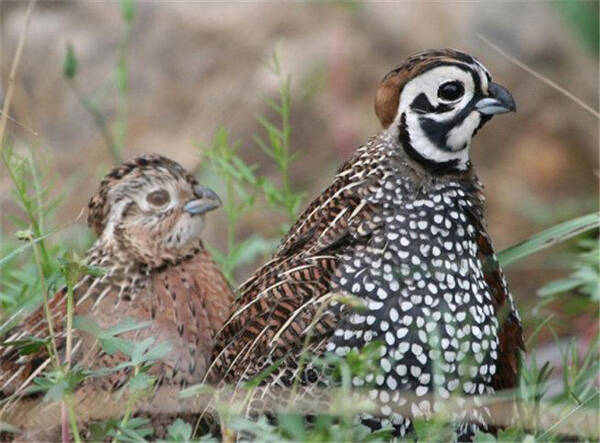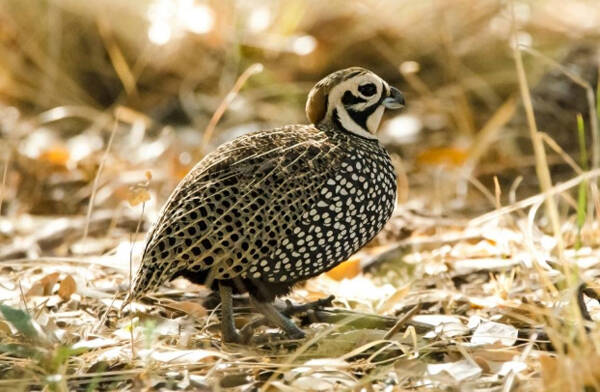Cyrtonyx montezumae
IUCN
LCBasic Information
Scientific classification
- name:Cyrtonyx montezumae
- Scientific Name:Cyrtonyx montezumae,Montezuma Quail
- Outline:Landfowl
- Family:Chickeniformes Ornithidae Ornithidae
Vital signs
- length:21-23cm
- Weight:176-195g
- lifetime:No textual research information is available
Feature
The male bird is characterized by a distinctive black and white face
Distribution and Habitat
It is found in Mexico (Tamaulipas, Hidalgo, Puebla, Oaxaca, the Orizaba Mountains of Veracruz, Coahuila, Mission Haacon to Guerrero and Oaxaca) and the United States (Texas to Arizona).
It inhabits oak or oak pine forests in savannas, but also in temperate forests, at altitudes between 1000 and 3000 m. The plant communities in these areas coincide with the vertical distribution of species in this genus. Although rare in cypress woodlands, straw grasslands, and mixed coniferous forests, a small number of populations have been recorded.
Appearance
Colored quails weigh 176-195 grams and are 21-23 cm long. This species exhibits strong sexual dimorphism in plumage coloration, although the spots in both sexes are very complex. The male bird is characterized by a distinctive black and white face. The ventral outline feathers are dark gray with white spots. The female bird is smaller and has a different feather color than the male, instead of a black and white face, with a brown pattern of different tones. The whole is also more tan. Both sexes have blue beaks; A short tail; Large claws used to dig underground for food sources. It is sometimes called "bug-eyed".
Details
Colored Quail (Cyrtonyx montezumae) has five subspecies.

Painted quails feed on green plants and insects on the ground, moving in clusters, usually walking or running on the ground, and feeding in the early morning. The food is mainly oxalis (oxalis SPP.) and Cyperusspp.) seeds. As a result, these birds are often seen digging in moist soil, with elongated claws suited to digging at the roots and tubers of plants. Insects and pupae are also another important food source. During the summer months, when prey is more abundant, birds often switch their diet to insect-eating.

Nesting occurs between the end of June and the end of August, however, recently hatched chicks can also be found in the Sonora Desert and Mexico in September. The nest is usually covered with grass weave. Both male and female birds participate in the hatching and brooding of eggs for the first few days after hatching. Each litter produces an average of 10 eggs, and reproductive success is thought to be related to summer precipitation. Summer rainfall increases the abundance and growth of food plants and increases the biomass of native perennial clumps, providing a critical safeguard for quail growth.
Listed on the International Union for Conservation of Nature (IUCN) 2016 Red List of Threatened Species ver 3.1 - Not Threatened (LC).
Protect wild animals and eliminate wild meat.
Maintaining ecological balance is everyone's responsibility!








